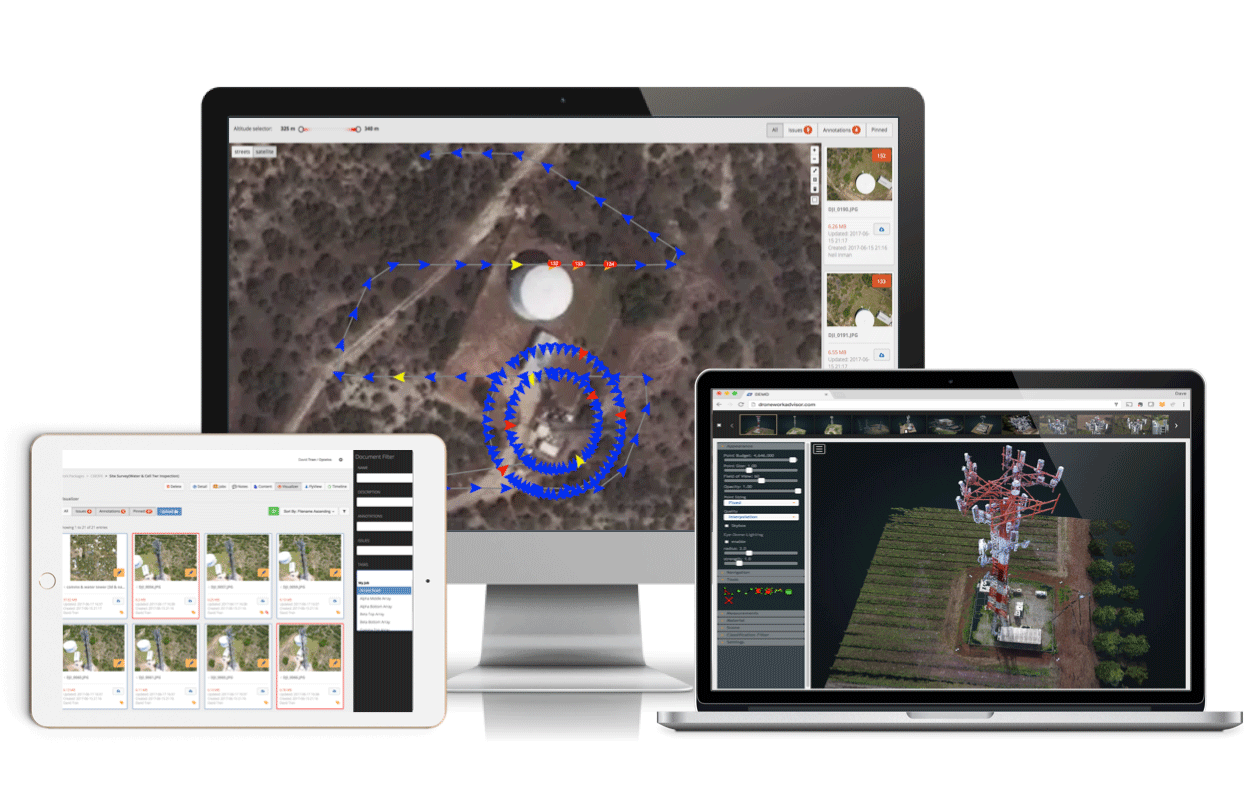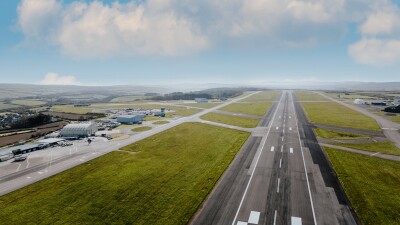As topics like data being the new oil take center stage in the drone industry, questions around what this means on a practical level are coming up more often than ever. Few doubt that data will continue to drive business insights, but how can professionals take that data and use it to transform an existing practice to make it more efficient? Will that in turn drive deeper business insights? Is that process going to generate more revenue and reduce costs?
These are the sorts of questions that Optelos is dedicated to working through. Founded in 2016 with the goal of addressing workflow and data analytics challenges through premium services and cutting edge software, Optelos is dedicated to finding areas where businesses can be more productive and successful by creating a structure around the data drones gather. Their process to do so is centered on creating business efficiencies, which often relies on drones, but the assets and deliverables that drive a business forward is their focus, regardless of how that info is gathered. Data ChallengesOptelos started life by inspecting cell towers with drones, but they’ve looked to apply what they learned in that space to a much broader range of verticals. They’ve been working with customers who deal with wind turbines, solar panels, utilities, oil & gas and plenty more. The challenges they saw early on were related to the sheer volume of data that drones can generate, most of which is largely unstructured.“Drones can gather a huge volume of images and videos,” said David Tran, co-founder at Optelos. “Gigs and gigs of data get generated per project. That’s where we come in. We help organizations that are using and ingesting drone data get structure around that info. This allows them to intelligently analyze, tag, and make it searchable,so data doesn't just live in a directory that's siloed. We want all of this information accessible so it's driving true insight. That's what we do from a workflow and analytics perspective. We help organizations simplify the job of consuming and creating insight from that data.”Tran mentioned that his company has seen businesses struggle with processing the volume of data and the type of data they’re gathering. All of that information is breaking traditional back office systems in terms of how that info is stored, managed and shared with stakeholders. Drones challenge existing practices and procedures, which means an organization ends up dealing with a strategic issue rather than a technical one. Data SolutionsOptelos is a workflow management and data analytics solution designed to leverage the capabilities of drones into the broader company wide workflow. Their solution is aimed at making drone integration easy and effective in order to create options for professionals in various industries.“We've got customers that fly miles and miles of poles everyday,” Tran continued. “With our platform, as soon as they finish a mission, all of that info then gets beamed up to our software so we can do all of our analysis. That creates a nice interaction between the drone operator and the client because it allows them to see the work as it happens.”That interaction is one of the biggest benefits that drones can provide. That quick turn around time means that there’s little waiting between collecting and using that data. The information that’s being collected can practically be used in real time. That concept has created incredible efficiencies. Data EfficienciesAs ever, questions around ROI are a prime focus for anyone interested in adopting drone technology. The need to quantify how UAVs are impacting the bottom line comes up often in the context of turning that data into something businesses can use throughout their ecosystem. The ability to index data, intelligently analyze and tag it, then go back and compare trends are all major factors in determining ROI, but the way in which that data is gathered is a critical factor as well.“For one of our customers, the process before the drones was to send crews of four people to climb the tower and do the work, which took 4-6 hours,” Tran explained. “And of course there are inherent safety risks with that kind of work. We were able to give them a customized program that allowed them to do that in 30 minutes with half the people. The data is then available immediately after flying, and so they look at that in terms of an ROI around cost reduction. We were able to save around 75% of project costs.”Besides the impact to the bottom line, this new process meant that the safety issues inherently associated with climbing those towers were eliminated. The process uses drones to replace a traditional workflow to collect data that is immediately actionable. Tran mentioned he’s looking forward to seeing more of these types of applications that go beyond taking a picture or survey, as these drone applications will be coupled with innovative uses. However, he also cautioned that operators shouldn’t lose sight of what’s truly important.“We look at drones as tools that give users the ability to make better decisions with their data,” Tran concluded. “That approach has helped us strip away a lot of the complexities of the technology. It’s why we’re focused on helping organizations simplify the job of consuming, analyzing, and creating actionable insights from their data.”As many professionals have unequivocally stated, drones need to be thought of as just another tool in someone’s arsenal that can be utilized to capture and analyze information they’d be looking to capture and analyze via any other means. Drones often represent a more efficient data collection method, but it’s the decisions around what’s being done with that info which will actually create the business efficiencies organizations want to see.
Data SolutionsOptelos is a workflow management and data analytics solution designed to leverage the capabilities of drones into the broader company wide workflow. Their solution is aimed at making drone integration easy and effective in order to create options for professionals in various industries.“We've got customers that fly miles and miles of poles everyday,” Tran continued. “With our platform, as soon as they finish a mission, all of that info then gets beamed up to our software so we can do all of our analysis. That creates a nice interaction between the drone operator and the client because it allows them to see the work as it happens.”That interaction is one of the biggest benefits that drones can provide. That quick turn around time means that there’s little waiting between collecting and using that data. The information that’s being collected can practically be used in real time. That concept has created incredible efficiencies. Data EfficienciesAs ever, questions around ROI are a prime focus for anyone interested in adopting drone technology. The need to quantify how UAVs are impacting the bottom line comes up often in the context of turning that data into something businesses can use throughout their ecosystem. The ability to index data, intelligently analyze and tag it, then go back and compare trends are all major factors in determining ROI, but the way in which that data is gathered is a critical factor as well.“For one of our customers, the process before the drones was to send crews of four people to climb the tower and do the work, which took 4-6 hours,” Tran explained. “And of course there are inherent safety risks with that kind of work. We were able to give them a customized program that allowed them to do that in 30 minutes with half the people. The data is then available immediately after flying, and so they look at that in terms of an ROI around cost reduction. We were able to save around 75% of project costs.”Besides the impact to the bottom line, this new process meant that the safety issues inherently associated with climbing those towers were eliminated. The process uses drones to replace a traditional workflow to collect data that is immediately actionable. Tran mentioned he’s looking forward to seeing more of these types of applications that go beyond taking a picture or survey, as these drone applications will be coupled with innovative uses. However, he also cautioned that operators shouldn’t lose sight of what’s truly important.“We look at drones as tools that give users the ability to make better decisions with their data,” Tran concluded. “That approach has helped us strip away a lot of the complexities of the technology. It’s why we’re focused on helping organizations simplify the job of consuming, analyzing, and creating actionable insights from their data.”As many professionals have unequivocally stated, drones need to be thought of as just another tool in someone’s arsenal that can be utilized to capture and analyze information they’d be looking to capture and analyze via any other means. Drones often represent a more efficient data collection method, but it’s the decisions around what’s being done with that info which will actually create the business efficiencies organizations want to see. 















Comments